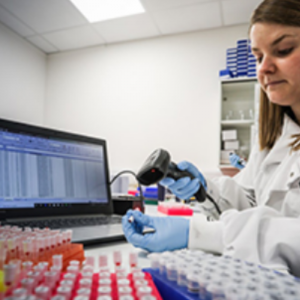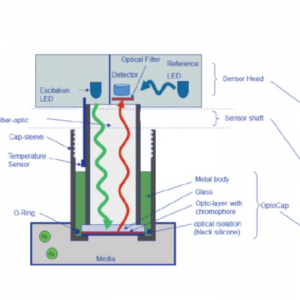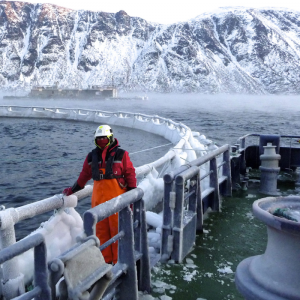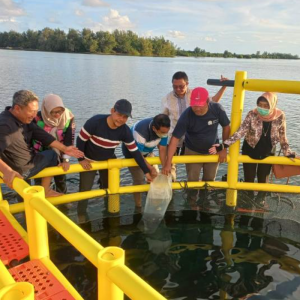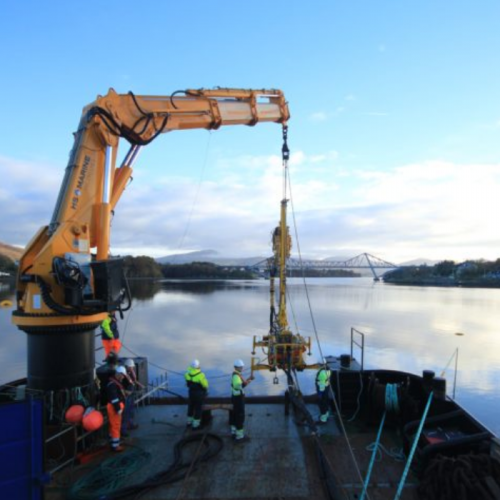
Anchoring Breakthrough For Aquaculture
| Thu, 03 Sep 2020 - 14:52
For the past year, tidal energy technology specialist Sustainable Marine Energy Ltd (SME), the University of Dundee, marine equipment supplier Gael Force Group, and the Scottish Aquaculture Innovation Centre (SAIC) have explored the feasibility of adapting a rock anchor approach from techniques used in marine energy sites to aquaculture.
With additional support from software provider Optum, the initial testing phase has been successfully completed and the results will allow the group to accurately predict the loads and capacity that rock anchors can bear in field trials. The findings will also enable SME to reduce the amount of material required to manufacture the anchors, leading to a more cost-effective and environmentally friendly product.
While traditional gravity and drag anchors made of concrete or steel are suitable for existing fish farming sites, the new technology could support the deployment of aquaculture sites in more remote, higher energy locations. The anchor forms a mechanical ground lock with the rock seabed without the need for resin or grout, and the reduction in weight also allows operators to use modestly sized, readily available vessels for deployment.
Also read: CPF Builds “Aquaculture 5.0” Shrimp Farm In The USA
The group is now looking for an aquaculture partner to trial the new anchors at a fish farm, progressing towards a full-scale deployment.
Adam Caton, geotechnical engineer at Sustainable Marine Energy, said:
‘To date, the project has been a tremendous success, allowing us to create a more cost-effective anchoring technology that will benefit the aquaculture sector. Each partner has played a pivotal role in getting us to this point – from Dundee’s analysis of anchor behaviour, to Gael Force’s input on typical fish farm mooring loads – allowing us to create a more efficient and innovative design.
‘These anchors have the potential to allow expansion of aquaculture to previously inaccessible sites with scope for large farms in energetic areas. This will bring benefits in terms of fish fitness and waste dispersal. This is a new sector for us and a market in which we are extremely interested. The next stage is to trial the technology at a fish farm alongside continued lab testing, to take another step forward in bringing the product to market.’
Dr Michael Brown at the University of Dundee’s Geotechnical Engineering research group commented:
‘This has been a challenging and academically interesting project that has pushed us to explore the use of novel numerical simulation techniques to capture the complex behaviour associated with different rock types, and distil this into practical approaches for cost-effective anchor design. Although rock anchors have been used for many years for classic civil engineering applications, they are often heavily over-designed and rely on grouting to bond to the rock mass. This new anchor technology is designed to be much simpler and without the need for separate grouting operations. This has resulted in the need to develop new approaches to anchor design, which we think has pushed the envelope of current rock anchor understanding.’
Also read: Stealth Cleaner, Robot Pembersih Jaring Ikan di Laut
When fully developed, adoption of the new anchoring technology could allow fish and shellfish farms to look at areas which are currently unusable. Locating operations in deeper, higher energy waters could help to reduce a range of health and wellbeing risks for aquaculture species, while also increasing the industry’s capacity, by allowing the development of larger farms with a lower environmental footprint.
Heather Jones, CEO of SAIC, added:
‘A new approach to anchoring could be a significant development for aquaculture in Scotland and the progress made on the project so far is very encouraging. Having an alternative way of deploying sites in higher energy water could play an important role in the sector’s sustainable growth over the next decade. It builds on many of our previous projects around fish wellbeing and it is particularly pleasing to bring skills from another key area of the Scottish economy into aquaculture, underlining the potential for cross-sector collaboration and knowledge sharing.’













